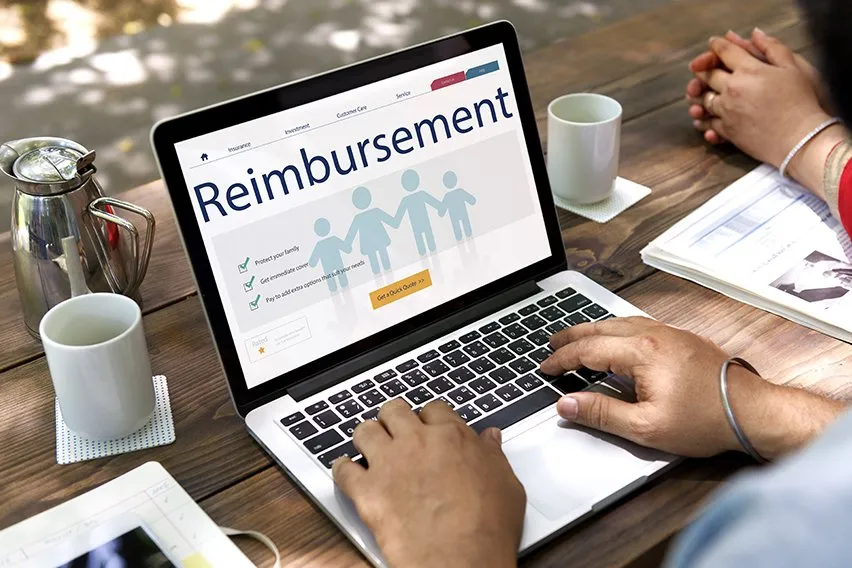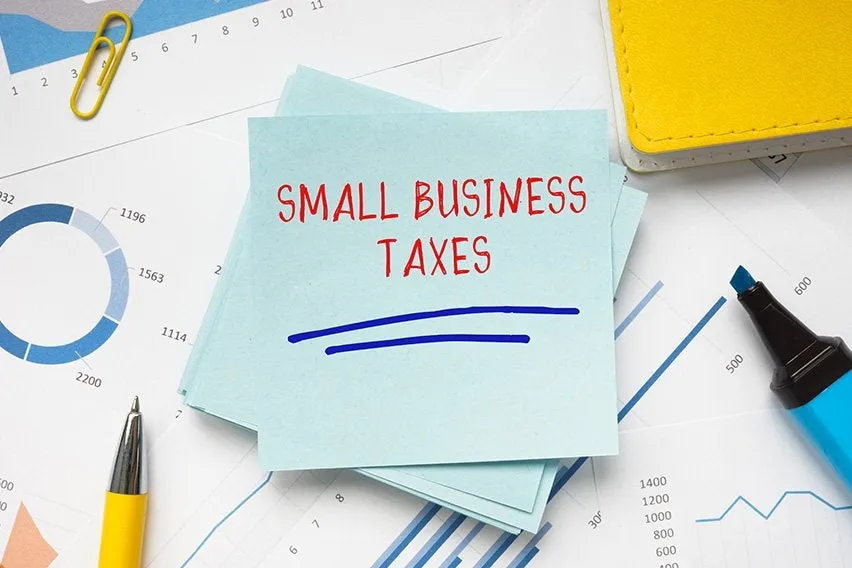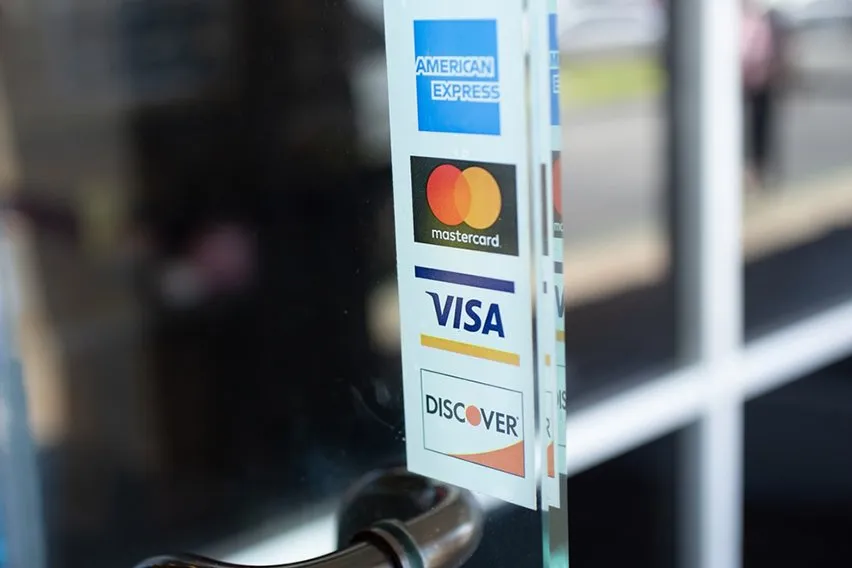13 Business Startup Costs and How to Calculate Them

Entering entrepreneurship is an exciting undertaking, but it’s not without challenges. Many first-time business owners underestimate the costs and how long it takes to turn a profit. Overhead costs such as rent, utilities, and equipment can add up quickly. Unforeseen challenges like supply chain issues or a natural disaster can eat away your profits within the first year.
However, with a strong business plan and the right support, you have a better chance of making your business ownership dreams come true. Read on to discover the 13 most common business start-up costs, how to calculate them, and support tips to help you through the start-up phase.
Key Takeaways
- Understanding and accurately estimating your startup costs can help your business succeed.
- When calculating your costs, include your one-time and ongoing expenses.
- Obtain financing, get a business credit card, and use accounting software to save costs.
Table of Contents
- Legal and Incorporation Fees
- Equipment Costs
- Office Space
- Inventory
- Research and Development Expenses
- Utility Expenses
- Marketing and Advertising Budget
- Website Development Costs
- Office Supplies and Furniture Expenses
- Professional Consultation Fees
- Payroll Expenses
- Insurance Premiums
- Taxes
- How To Calculate Startup Costs for a Business
- Best Ways To Save on Startup Costs
- Closing Thoughts on Business Startup Costs
We’ve compiled a list of 13 common business startup costs. Not all will apply to every active trade or business and there may be additional costs specific to your situation. Consider these a starting point for your consideration.
1. Legal and Incorporation Fees ($145 to $1,000)
Not every new business needs legal help to set up. It will depend on your business structure and business type. 1 However, it is a good idea to seek legal advice before making any final decisions about your business to ensure you haven’t left yourself in a legally vulnerable position.
Business registration costs will vary by state and region, as will incorporation costs. 2 However, many startup businesses begin as sole proprietorships and move on to incorporation later. Your lawyer can help guide the decision process and outline your best options.

2. Equipment Costs ($10,000 to $130,000)
For many brick-and-mortar businesses, equipment can make up a substantial portion of the startup expense, often costing upwards of $30,000. Generally, most equipment is a fixed asset as it is intended to last for the duration of the business, requiring repairs over replacement. For example, a bistro or coffee shop needs flatware, utensils, a coffee machine, a stove, fridges, and other related equipment. A physical therapist or chiropractic office needs examination tables, anatomical figures, and specialized machinery. A delivery business needs a warehouse, skid steer, vehicles, and palette jack.
Average equipment costs across several industries are:
- Small coffee shop: $15,000 to $30,000
- Chiropractic office: $7,000 to $22,500
- Retail store: $12,000 to $30,000
- Restaurant: $85,000 to $125,000
3. Office Space ($37 per square foot)
The average cost per square foot for lease space in the US is $37. 3 The city and location where you set up shop will influence the total cost. For example, New York City and Washington, DC have some of the highest rates in the country, whereas Albuquerque and Louisville have some of the lowest rates.45
Leasehold improvements count as a fixed asset and can add to the overall cost of your office space. These include bathroom or kitchen installations, painting, lighting, flooring, and signage. Your landlord may offer a credit for improvements that can offset the cost.
Some communities have strict regulations around signage, requiring permits and municipal or city approval.
4. Inventory (15% to 30% of your budget)
Service-based businesses, such as web development, freelance writing, and accounting don’t have inventory because they aren’t selling a product. However, anytime you sell a physical product, you’ll likely have inventory. Even if you are a B2B (business-to-business) model, it’s possible to be ‘on the hook’ for storing an unwanted product.
Inventory-based businesses can anticipate inventory costs using up to 15% to 30% of their budget. The key is matching demand with supply. This can take time because it involves understanding the specific needs of your consumer. If you have too much, it adds to your overhead and could risk damage or going bad if it’s perishable. If you have too little, you won’t be able to keep up with demand and risk your clients finding an alternative elsewhere.
5. Research and Development Expenses ($100 to $30,000)
Research and development (R&D) is one of the costs that can vary the most, from as little as $100 to $30,000 and more. You can perform a significant amount of research by scrolling through the internet and social media channels for many things but anything that skirts infringement or involves big business ideas will require significant research.
R&D is the investigation, exploration, experimentation, analysis, and design stages of your business idea or plan. The purpose is to understand your competitors and set yourself apart. There are a few key ways to approach R&D, including interviewing potential customers, A/B testing (running 2 different product versions simultaneously and seeing which one performs better), and various data collection methods.
6. Utility Expenses ($2 to $15 per square foot)
Your regional location will make a big impact on your utility expenses. For example, California, Hawaii, Alaska, and Connecticut pay some of the highest utility fees in the country. 6 Small business utilities7 can include:
- Electricity and natural gas
- Water and sewer
- Garbage
- Internet
- Phone
States with deregulated energy, such as Maine, Ohio, Texas, and Florida, allow shopping around for the best rates, which may lower these costs. The square footage and number of employees you have will increase the cost of your utilities.
7. Marketing and Advertising Budget (7% to 10% of your budget)
Your total budget for marketing and advertising should not exceed 10% if you are starting a small business. It may be tempting to throw everything at marketing to get your business noticed but it isn’t sustainable if you aren’t turning a profit within the first 3 months.
Alternatively, you could utilize a social media campaign, print advertising, and a website SEO strategy. An often untapped option is public speaking engagements such as community or church events. Depending on your target audience, you could explore speaking opportunities in senior centers, college or university settings, and service groups like your local Lions Club or Rotary Club.
8. Website Development Costs ($0 to $10,000)
Website development costs will vary greatly depending on your needs and how you go about it. You can use a free website builder and design your own or hire a freelancer or agency to design and build it for you. The latter can cost upwards of $1,000 to $,5000 to build and require thousands in maintenance fees per year.
A website builder is free but you need to pay for your domain name and each integration, such as a payment solution and inventory tracker. If you have little to no experience with web design, it’s a good idea to hire someone to do it properly. An inefficient website can drive away customers.
9. Office Supplies and Furniture Expenses (10% to 15% of your budget)
The office supplies that apply to your particular business will vary but in general, you can expect supplies to consume 10% to 15% of your budget. In a digital age, we often overlook basic office expenses, especially for online businesses or a paperless workplace. Keep in mind that pens, notepads, desks, chairs, tablets, and computers are all expenses you’ll need to consider. Even software subscriptions for collaborative environments, data processing, and presentations can add up quickly.
A traditional office environment will include printers, ink, printer paper, whiteboards, a phone or headset, a breakroom coffee maker, a microwave, and mugs. A high-cash environment or expensive retail store will need a safe and other security features such as blast-proof windows, cameras, and a security monitoring system.
10. Professional Consultation Fees ($300 to $5,000 per year)
Professional consultants include CPAs and lawyers. The cost can range from $75 to $400 per hour. It may seem like a big cost but investing in professional help can save you more in the long run.
An accountant can ensure you are tax compliant and provide guidance on what business structure to choose. They can also provide tax preparation and accounting services and help limit your tax liability by ensuring you claim and deduct everything that applies to your business, including startup expenses.
A lawyer can also help with business structure, especially if you plan to incorporate. They can also help if you have legal concerns, such as copyright infringement.
11. Payroll Expenses (30% to 80% of your budget)
Employees make up a substantial cost in any business, often around 30% to 80%. This can feel hard to take at the beginning when you aren’t making money but they play a vital and important role in your business.
The average employee actually costs 1.2 to 1.4 times their salary in ‘hidden’ costs such as required insurance premiums, the cost of background checks, administrative hiring costs, and the cost of training. 8 The good news is there are tax savings that accompany hiring staff. Talk to your accountant or the Small Business Administration about potential tax savings and options.
12. Insurance Premiums ($40 to $147)
Your monthly insurance premiums will cost between $40 and $147 a month. 9 Your insurance startup costs will depend on the business type and regional requirements. You may be able to save by bundling your insurance policies under one provider and paying yearly rather than monthly. Insurance premiums are considered a part of your small business administration.
General liability insurance is a common choice for many small businesses and usually costs about $42 per month. If you have employees, you’ll need Workers Compensation Insurance 10 which averages about $45 per month.
Other common insurance types include commercial property insurance at $67 per month and commercial auto insurance at $147 per month.
13. Taxes (varying costs)
The taxes are variable startup costs that differ by region, business type, and business structure—sole proprietors pay according to their tax bracket and corporations are taxed at 21%. Taxes are a hidden cost for many small business owners because they don’t always know the tax laws in their area nor the taxes applicable to their type of business.
Learn about the taxes you need to charge your customers and pay come tax time, such as state sales tax or excise tax to prevent high penalties come tax time. You can count on paying Self-Employment Tax at 15.3% which covers your social security and medicare insurance.
Keep in mind you can deduct startup costs, depending on your business type.
How To Calculate Startup Costs for a Business
To calculate your business startup costs, start by making a list of all your expenses, including small business administration costs. Put them into one-time and ongoing expense categories. One-time expenses are things like equipment, such as a computer or tool needed to manufacture your product. Ongoing or recurring expenses include things like your rent, utilities, payroll, and office supplies.
Next, estimate the cost for each. Consider the long-term value of purchasing a quality product once versus a cheaper product that will fall apart sooner and require you to purchase a replacement within the year. It’s a good idea to round up and add a buffer for inflation, taxes, and fees.
Next, add up the expenses in both categories. You should budget enough to sustain your business for at least 1 year past your target launch date, not from the date you calculate your start-up costs.
Finally, run your numbers. Keep in mind some of these costs can rise unexpectedly from things like inflation and supply-chain issues. Use the results to determine your pricing model.
Small business owners use a cost sheet to make up part of the business plan and attain financing. Therefore, it’s important to be realistic about each of your estimated startup costs.
Best Ways To Save on Startup Costs
Small business owners can help to lessen your overall startup costs by making strategic choices. Here are a few examples of ways to save on startup costs.
Obtain Financing
To obtain financing, first determine the kind of business loan you need. Review your credit score and itemize the value of any collateral you have. Next, explore all your business loan options before making any decisions. A traditional bank or credit union business loan is often a first choice for a prospective business owner but you should also look into the government funding programs through the small business administration, an asset loan, business line of credit, or investment partners.
Finally, carefully consider the interest rate, duration, balloon payments, and other terms of the loan. It’s important to get enough to sustain you for 1 to 3 years or longer, depending on the type of business you want to start. However, it’s more important not to overextend yourself.
Apply for a Business Credit Card
A business credit card offers three main benefits. It helps you build credit for your business and you can usually gain a higher limit than you would with a personal credit card. A business credit card can also help keep all your work-related purchases in one location, making your bookkeeping process more streamlined.
Use Accounting Software
Accounting software can help you streamline your process and simplify tax time. FreshBooks accounting software does more than offer comprehensive cloud-based bookkeeping software. It has a full suite of features that can provide support to your small business and help it grow. Features include email and banking integrations, invoicing, and payment solutions.
Review Your Costs Monthly
Each month, review your costs and your revenue, including your small business administration costs. Look for areas where you can cut back on expenses and carefully consider your price point to see if you should raise or lower your prices.
Roll Out Slowly
It’s tempting to put it all out there at once but there are many benefits to rolling out your product slowly. For example, a retail company making shirts is better off choosing a small number of styles and colors and adding more after six months or a year. This limits your overhead—you don’t have bolts of fabric in multiple colors or unsold inventory taking up space. It also gives you an opportunity to get customer feedback and pivot accordingly.

Closing Thoughts on Business Startup Costs
Knowing how to estimate and anticipate the startup costs of starting a business can help you on your entrepreneurial journey. A strong business plan and comprehensive budget can help your business survive until you can enjoy your business profits, and effective cost-management techniques will give you the support you need to enjoy a successful career as a business owner. Utilize professionals to help you avoid legal and tax pitfalls. Use accounting software to help streamline your business processes and make tax time simpler.
Article Sources
- IRS, Business Structures, Accessed June 6, 2024
- SBA, Register Your Business, Accessed June 6, 2024
- Commercial Edge, National Office Report, Accessed June 6, 2024
- BDC, Expensive US Commercial Real Estate, Accessed June 6, 2024
- Biz Journal, Cities with the most affordable office space, Accessed June 6, 2024
- Energy Information Administration, Electric monthly power, Accessed June 6, 2024
- Constellation, How to estimate utility costs for a business, Accessed June 6, 2024
- SBA, How much does an employee cost you, Accessed June 6, 2024
- Insureon, Small Business Insurance Costs, Accessed June 6, 2024
- Insureon, Workers compensation state laws, Accessed June 6, 2024
Reviewed by
Sandra Habiger is a Chartered Professional Accountant with a Bachelor’s Degree in Business Administration from the University of Washington. Sandra’s areas of focus include advising real estate agents, brokers, and investors. She supports small businesses in growing to their first six figures and beyond. Alongside her accounting practice, Sandra is a Money and Life Coach for women in business.
RELATED ARTICLES


 Medical Mileage Rate 2025: Everything You Need to Know
Medical Mileage Rate 2025: Everything You Need to Know 25 Small Business Tax Deductions (Write Offs) in 2025
25 Small Business Tax Deductions (Write Offs) in 2025 6 Ways to Control Expenses In A Company
6 Ways to Control Expenses In A Company What Is Expense Analysis & How to Analyse Business Account
What Is Expense Analysis & How to Analyse Business Account What Is Amex Express Checkout & How Does It Work? A Guide
What Is Amex Express Checkout & How Does It Work? A Guide